Up Next

“It’s a compromise we need to find for ourselves,” says Charles Leclerc on how to delineate the competition between team-mates and serving the team.
“It’s always the case we need to push for the team. Carlos wants to beat me, I want to beat him too.
“Once we are on track we try to be careful whenever we fight each other and always trying to have the vision of what we can do better for the team.
“Out of the car we have to work together – and the same way in the car to an extent, with the strategy etc.”
“There’s always a balance to be found,” says Carlos Sainz Jr. “We’re getting on well, we have a good relationship. I’ve never had an issue with team-mates so I can’t see why I’d have one with Charles.”
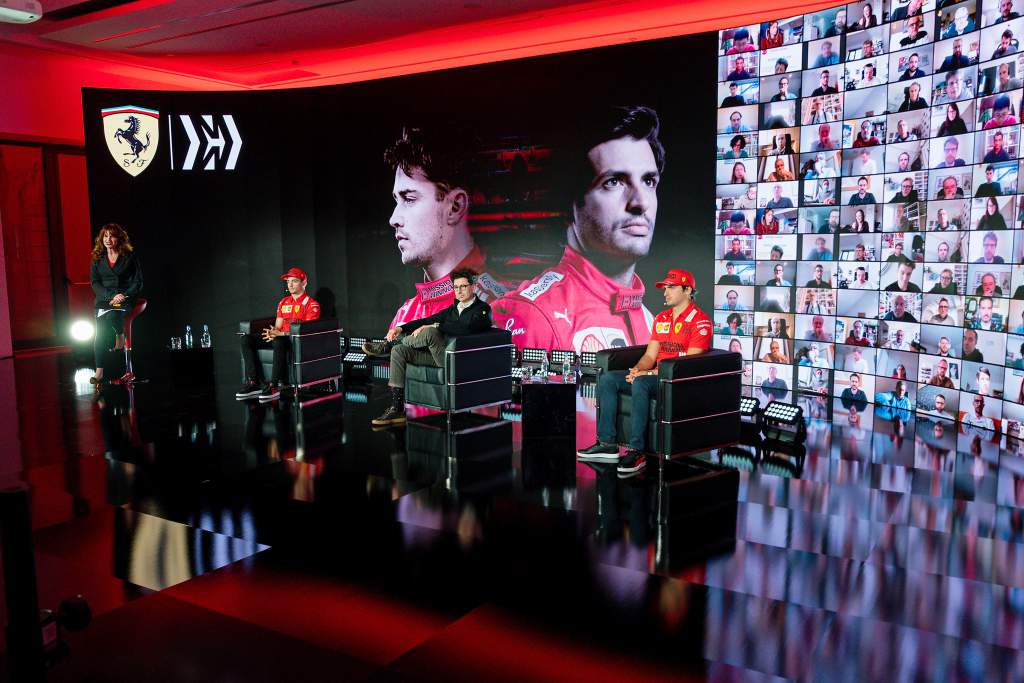
Earlier in Ferrari’s 2021 team launch last Friday Sainz had said: “When there’s a championship or something a bit special to consider, we’ll worry about it a bit more.”
The talk between them was relaxed but polite, friendly but measured, an acknowledgement that the competition between them exists and a definition of the parameters within which it will play out, the insistence that the team comes first.
This of course is before wheels are turning or clocks running…
But Sainz has one hell of a job on his hands – and not just because of Leclerc’s speed. This is the driver who walked into Ferrari in his second year of F1 and very explicitly made it his own.
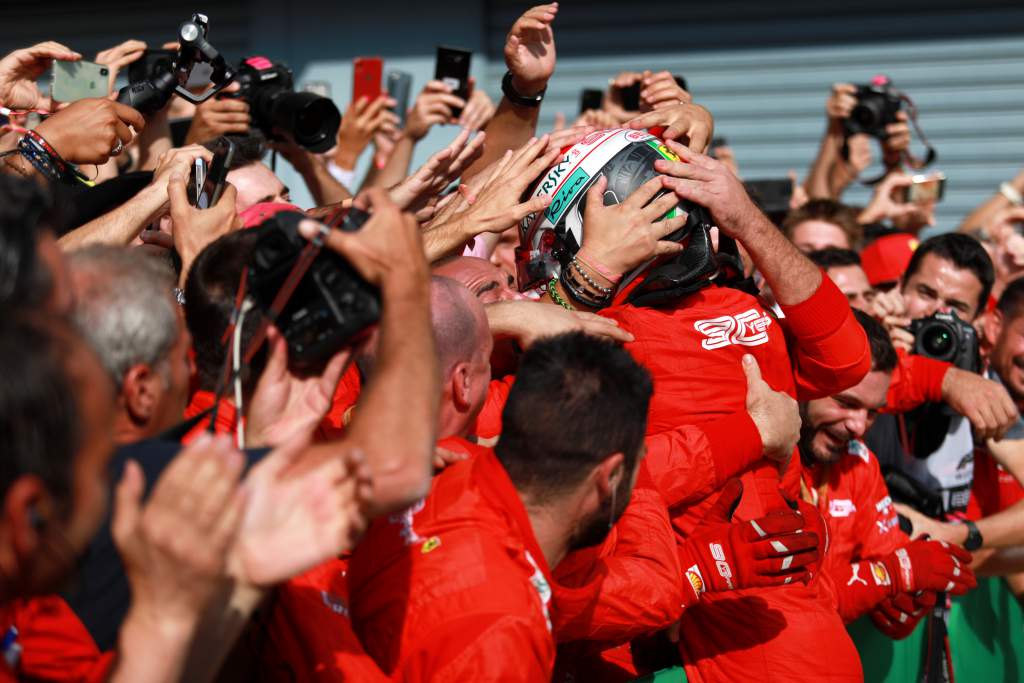
Leclerc did that by performance through 2019 and by sheer narrow-eyed ambition at Monza that year, even against the in-the-moment interests of the team.
He was reprimanded by Mattia Binotto in the aftermath of going against an agreement to return the favour of Sebastian Vettel’s qualifying tow by way of plausible deniability.
But he was publicly forgiven by the boss the following day after a fighting victory drive in which he repelled the attacks of both Mercedes drivers.
It was the rubber-stamping of the new reality; this was Leclerc’s team now. Vettel would see out the remaining season of his contract but there would be no discussion about a new one.
It would be fair to say the Ferrari drivers’ discussion last Friday was framed with Leclerc as the established team leader, Sainz aspiring to compete with him.
Leclerc, after all, is the team’s golden one, a product of its own academy, a driver who as an F1 sophomore was lobbed like a grenade into the senior team to test the theory of its late boss Sergio Marchionne that the team was being under-served by its Vettel/Raikkonen line-up.
Marchionne died before seeing the outcome of the combustible mix he’d made. What would happen if you whipped the carpet from beneath the proud multiple champion, got him to fight for the team leader status he’d previously assumed?
Got him to fight with an outrageously gifted young padawan with the steel of ambition as yet unfulfilled, hidden just behind the boyish smile, and to stage this contest – for that it was it was – under the spotlight of the most famous team of all, with the amplification of emotions that would entail. What would happen?

It was the sort of move of which Old Man Ferrari would most certainly have approved. That mentality of getting the best out of people by throwing them into a pit to fight it out had rather fallen out of fashion at Ferrari in the rational Brawn-Todt-Schumacher years and their immediate aftermath. But it seemed to resonate with Marchionne.
Vettel’s problem was that the man who recruited him – Luca di Montezemolo – was gone by the time Seb arrived in 2015, ousted in a heavyweight corporate coup by Marchionne, a man who took no prisoners.
Marchionne didn’t know much about F1, he admitted. But he set about understanding it and with the air of the outsider asking the obvious questions, he pondered just what Vettel was bringing to the party. Especially after those two high-profile errors of 2017 (Baku behind the safety car and off the Singapore startline) played their part in a very real title bid collapsing (as Vettel’s errors would again the following year).
Vettel was a driver who thrived in a supportive environment, who had imagined he was joining a sort of re-run of the Michael Schumacher/Ferrari years, with everything geared around him just the way it had been for his hero.
It wasn’t like that. Marchionne had inherited the star signing of his predecessor and Vettel was only an employee, never a partner. He was accorded the team leader status he’d been promised, with his friend Kimi Raikkonen in support, but he was told in no uncertain terms to stop trying to play a part in running the team.
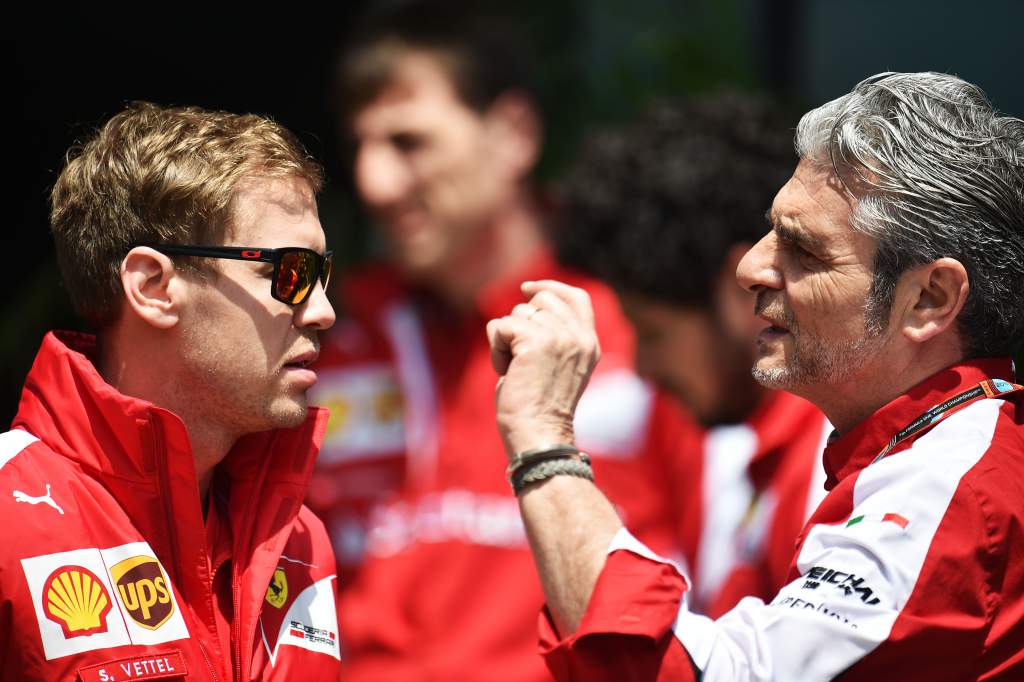
This message – which almost certainly originated from Marchionne – was relayed by the boss’s lieutenant Maurizio Arrivabene (pictured with Vettel above) on live TV. It didn’t break the relationship because the relationship had never really been there but in that moment it ceased to be what it could have been.
Vettel at least tried to control what he could – his immediate garage environment – and several times his frustrations with operations could be heard over the radio. But it’s tempting to believe there was a link between his frustrations and his errors.
Leclerc arrived without any of this baggage, just a phenomenal gift behind the wheel and a big hurry to convert it into a winning F1 career.
He was just what Marchionne was looking for and after Leclerc’s preparation year at Sauber went so well in 2018, everything slotted into place. Then Marchionne suddenly died. But his dream didn’t.
Leclerc replaced the easy Raikkonen, out went Vettel’s team leader status. Ultimate Ferrari boss John Elkann had decided to stick with Marchionne’s plan regarding not only the driver line-up but also the replacement of Arrivabene with Mattia Binotto.
The new team principal had a better way with people and was more gracious with Vettel. But the underlying position didn’t change; Leclerc was seen as the future, Vettel was simply under contract for another two years. It would take a convincing domination of Leclerc by Vettel to change that.
“Just letting you know I’m being held up now. I don’t know if you want to know, but…” :: Charles Leclerc
So Leclerc was pushing against an open door in his ambition. Vettel retained his composure, pride and dignity. But beneath it all lay the savage fighting spirit that had helped propel him to those four world titles.
For all those reasons, he began 2019 in a hugely motivated state of mind, putting past frustrations aside. The drivers would be free to race, Binotto declared, but Vettel, as a four-time champion, would be accorded initial priority in any situations of conflicting strategy – a policy that would be reviewed ‘if necessary’.
Leclerc played this perfectly when asked about it.
“I think it’s right,” he said. “There should be a priority. It’s only logical. It’s up to me to put myself in a position through performance to have priority in the future.”
The niggle blew up straight away; in four of the first five races there was driver-induced tension on the pitwall.
Late race in Melbourne Leclerc was catching fourth-place Vettel and pointing out he was being held up. He was – but only because he was on much fresher tyres.
He was able to be on fresher tyres because earlier, having been way behind the Mercedes/Vettel/Max Verstappen tactical struggle over track position, he was under no undercut threat from behind and so was able to run long in the first stint.
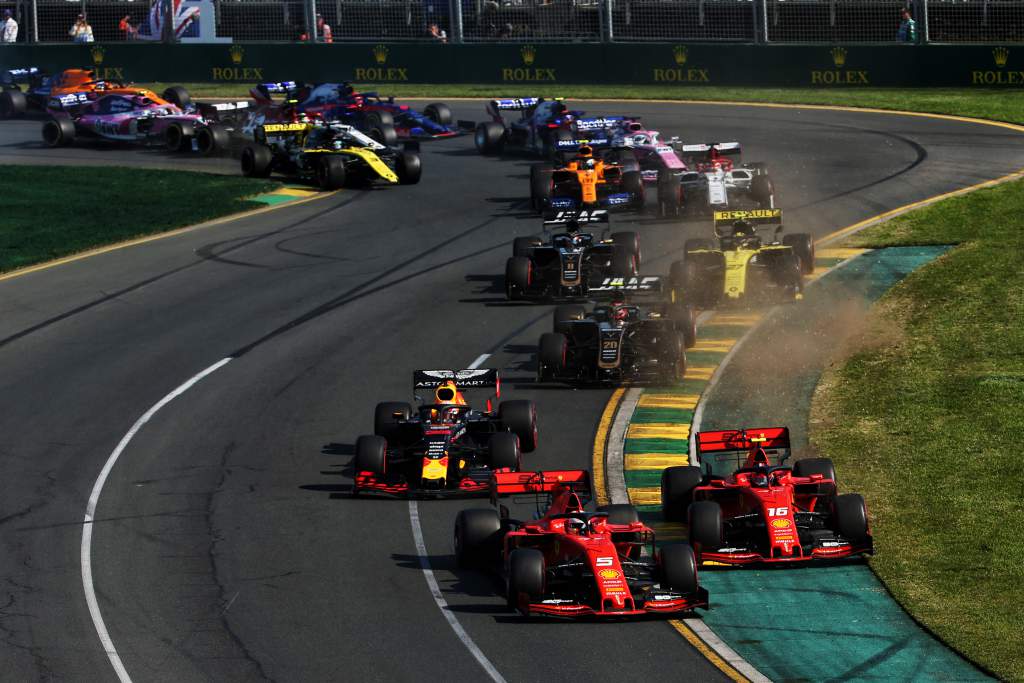
Catching Vettel was a false picture and he was told to hold position. Leclerc diplomatically didn’t make anything of the fact that Vettel had bundled him over the kerbs in the opening seconds of the race. “I think he mustn’t have seen me,” he said, with that winning earnestness he has.
In Bahrain Leclerc was in dominant form and took pole from Vettel by the margin of 0.3s. He then blew his start and fell to third as Vettel led away.
But despite Vettel getting the perfect break, Leclerc was right back upon him after a couple of laps, complaining of being held up. He was told to hold station and await instructions. So he passed him four corners later…
This was the first public demonstration of the steeliness that would form the Monza weekend and of the dynamic between the supposed junior driver and the legendary team. There was no public admonition.
A control electronics problem denied Leclerc a dominant victory and handed it to Lewis Hamilton with whom Vettel had been dicing when he spun and damaged his car. Particularly bad timing for Vettel and it was hard not to think the pressure of the situation was being felt in the cockpit – which of course only created more pressure.
Vettel bounced back in China and was comfortably the faster Ferrari driver there. Leclerc still had things to learn about the technicalities, particularly regarding how to anticipate track evolution in the set-up of the car into qualifying.
But within seconds of the start Leclerc had got himself ahead of the other Ferrari, as Vettel was squeezed by a Mercedes.
Vettel was still quicker though – and spent many laps on the radio asking that Leclerc be moved aside. He eventually was, much to Leclerc’s irritation.
The laps spent in Leclerc’s wake had damaged Vettel’s tyres and by the time he was waved through he was no longer quick.
“Just letting you know I’m being held up now,” radioed Leclerc. “I don’t know if you want to know, but…”
Two races later, in Spain, there was a near-repeat of the first corner of Melbourne, Leclerc forced hard over the turn two kerbs by a defensive Vettel, Leclerc afterwards saying, “I think I was in his blind spot.”
But by then the full scale of the challenge Vettel faced had been laid bare – in Baku. Bahrain was one thing, this was something else entirely.
Leclerc’s pace before hitting the wall in qualifying had been extraordinary. When the track was hot and the Ferrari working its tyres well, he was over 0.3s faster than Vettel and almost 0.7s ahead of the Mercedes. “There’s no way we can live with that pace,” said Merc’s Toto Wolff on Friday.
Baku was a special place for Leclerc. He’d achieved the difficult feat in F2 here of winning both the feature race and (on the road at least, before a penalty dropped him to second) the reversed top-eight sprint race – in between attending his father’s funeral.
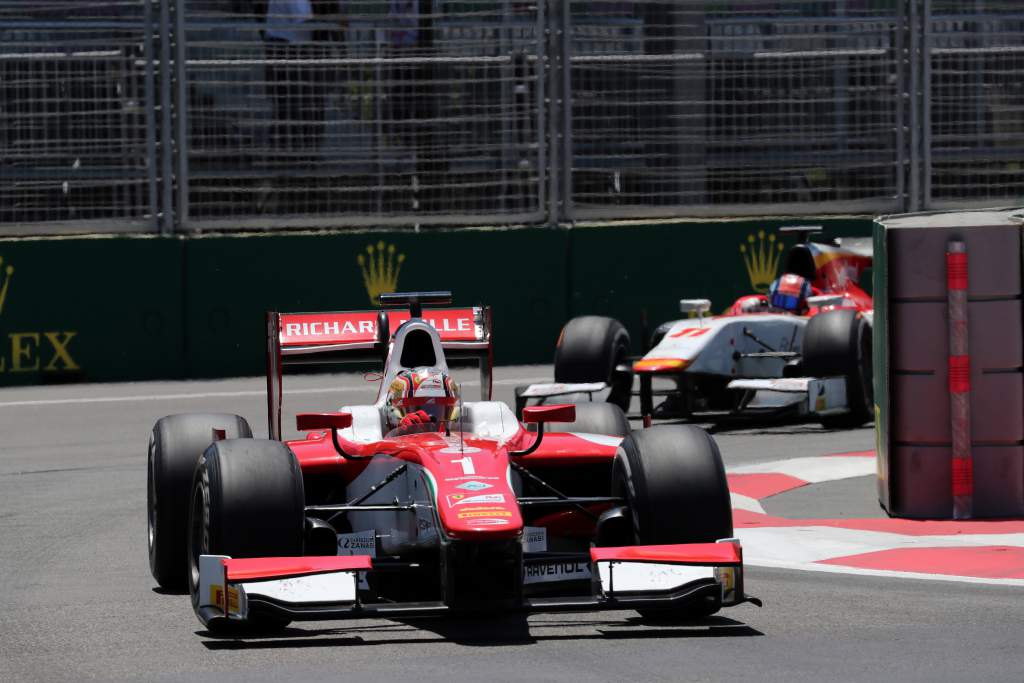
In his first F1 race here he had the Sauber – a car on merit around 2s slower than the Ferrari – snapping at the heels of Raikkonen and lapping around 2s faster than his Sauber team-mate Marcus Ericsson.
OK, so he crashed out this time, just like someone in just their second year of F1 might. The significant thing was the staggering pace of his peak performances though. Once those peaks were joined up, any driver in the other car was going to be having a tough time, past world champ or not.
The momentum continued to slip from Vettel and he continued to rage against it. He stuck the Ferrari on pole in Montreal as Leclerc again badly lost the set-up as the track had changed through the day.
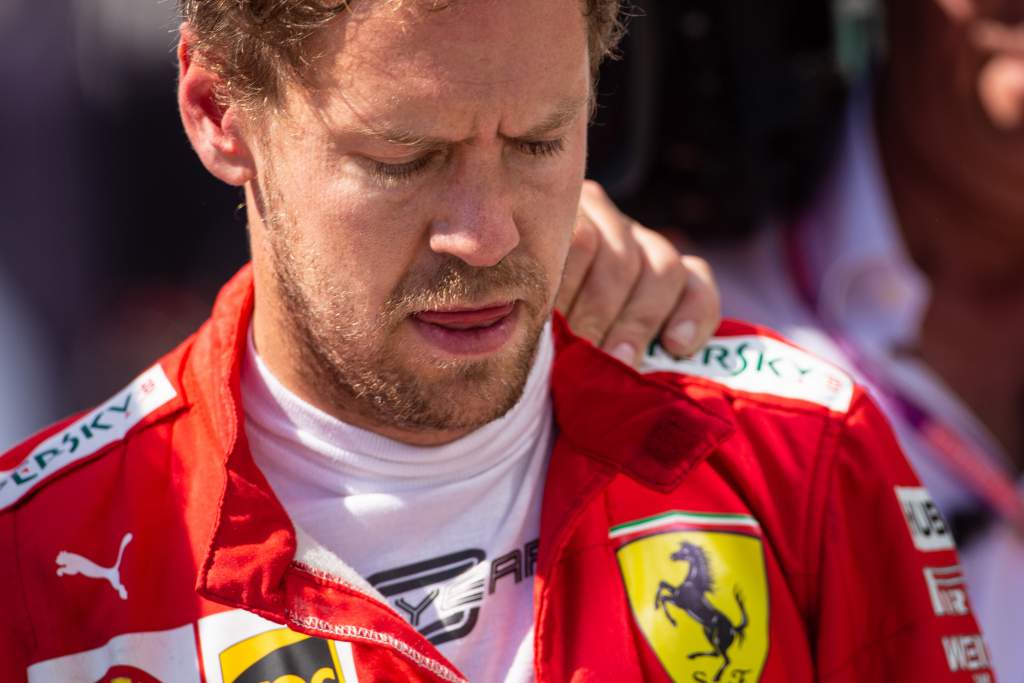
Against such a backdrop, Vettel’s anger at the time penalty that deprived him of his across-the-line victory over Hamilton can be even more easily appreciated.
A run of mid-season technical problems for Vettel nullified this fascinating in-team contest. But at Spa they were running free, the powerful Ferrari in its element.
Leclerc’s pole lap was a stunner – and half-a-second clear of Vettel. He followed it up with a controlled victory, Vettel being used by the team to keep Hamilton off Leclerc’s back. It was the perfect time for Leclerc to land such a decisive blow.

Monza was the following weekend. The symbolic resonance of a victory on home ground would be powerful indeed. There was little, if anything, between the pace of the Scuderia’s two drivers around here – and they were clear of the rest.
The complication would be the slipstream, so essential in qualifying here. There was a team agreement. For the first of the two Q3 runs Vettel would tow Leclerc. For the second runs they would swap.
Vettel did as agreed and towed Leclerc to a provisional pole on the first runs. But there was a complication on the second as the whole field – wishing to be the towed and not the tow-ers – tried to leave it as late as possible before going out, playing a game of dare.
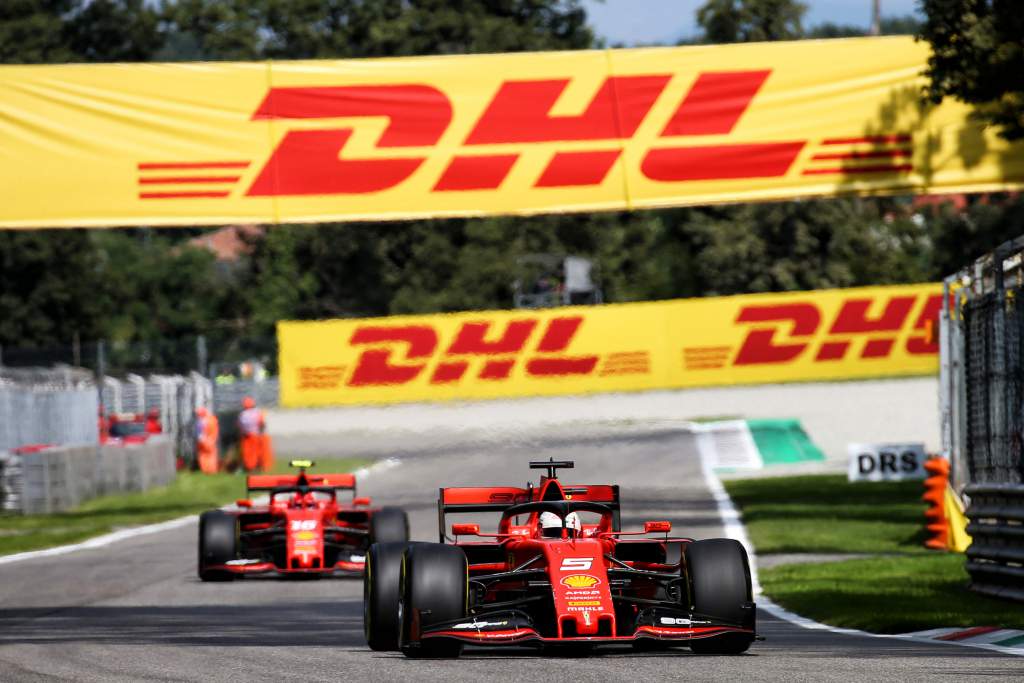
In the ambiguity created by that situation was the perfect place for Leclerc’s naked ambition to hide. With those at the front of the queue driving the out-lap slowly, hoping to be overtaken, Leclerc didn’t force the issue, just stayed in the queue.
An infuriated Vettel barged past everyone, desperately trying to get to the line before the chequer fell. Only then did Leclerc push through.
Vettel was then instructed to back off so as to put Leclerc in towing position – but it was too late. They missed the chequer. Leclerc’s first run stood as pole.
“To me it was very clear what was agreed beforehand,” said an angry Vettel. “I was the one trying to indicate ‘Get out of the way’ because it was clear that I should be the one behind in the second run and getting a tow, because I was the first one in the first run. People were slowing down, Charles was slowing down and in the end I didn’t get across the line…”
“I definitely listened to what we intended to do,” said Leclerc, with that plausible deniability and ambiguous phrasing, “but we weren’t doing what we were supposed to do and that’s why it was a mess and I didn’t get a run in the end.”
Ultimately, he saw a chance not to tow himself off pole at Monza – and took it.
In the post-qualifying debrief Binotto came down heavily against Leclerc’s interpretation. It’s one thing seeing the team’s future as being with the 21-year-old, but another having team instructions subverted.
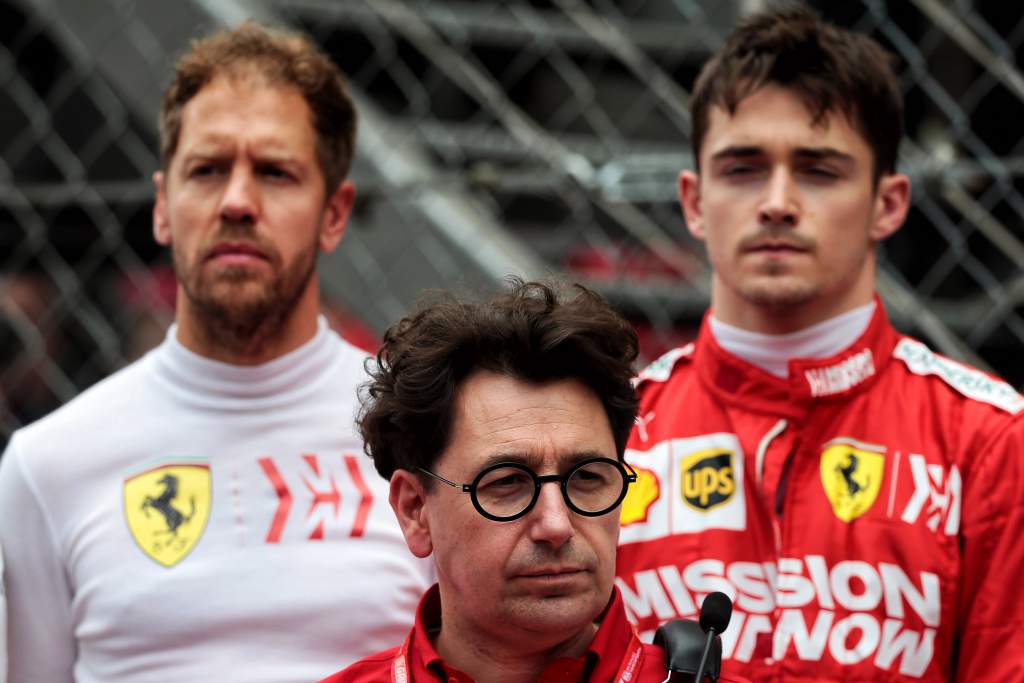
Binotto was the boss, after all. He was trying to play fair with Vettel, just as he had all year. But Leclerc was a force of nature. There was bound to be some bruising along the way.
There was some more the following day as Leclerc got his elbows out in defending from Hamilton, forcing the Mercedes off track. But it was a glorious victory, Ferrari’s first at Monza in nine years. In the overwhelming emotion of it all, Binotto declared, “All is forgiven.”
Vettel? He’d spun out of fourth place then caused an accident as he rejoined.
The deed had been done. This was Leclerc’s team. He’d explicitly broken a team instruction in order to prevail – and had been publicly forgiven because of his performance. Add that backing to the overwhelming force of pace and ambition that Leclerc represents, and you begin to get some idea of what Sainz has to work with.
Sainz has been recruited under very different circumstances to those of Leclerc’s two years ago. He’s been signed as a fast, polished professional to support the cutting edge Ferrari expects Leclerc to be in its future championship campaigns.
By contrast Leclerc was signed almost specifically as someone to expose what the team perceived as a limitation with its former lead driver – someone who had been recruited by the previous regime.
Sainz will, in his own shrewd way, work out where the weak points to the formidable edifice of Leclerc are. Simultaneously he needs to somehow become an intrinsic but friction-free part of Ferrari’s operation, like the smooth operator he is.
This is going to be fascinating.









